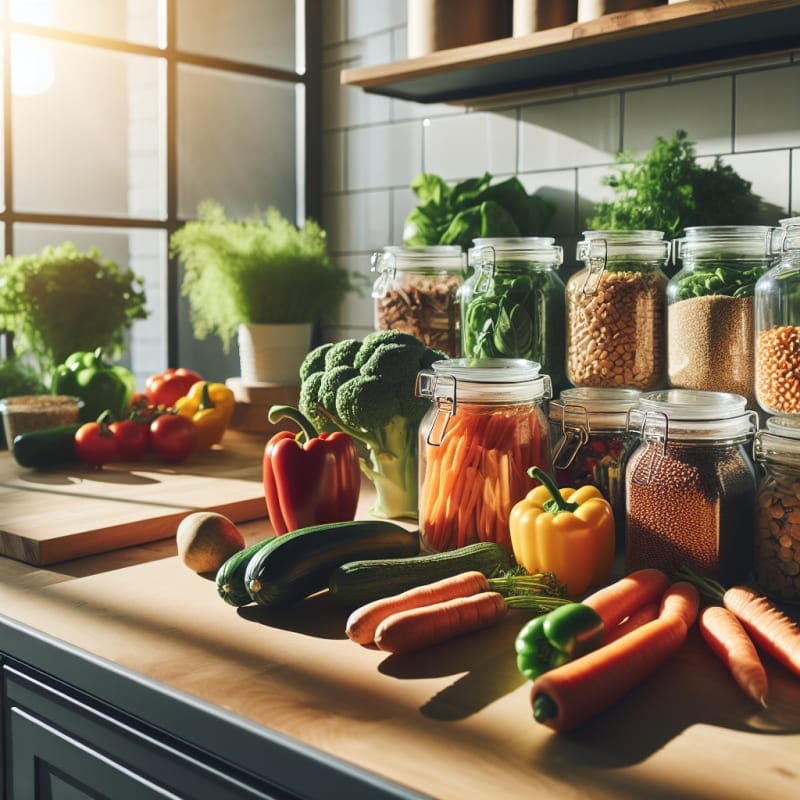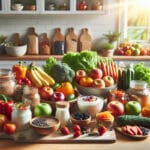Clean-Label Vegetarian Foods: The 2025 Trend You Need to Know
In 2025, the world of vegetarian eating is transforming. Shoppers are no longer satisfied with just meat-free or dairy-free labels—they want clean-label vegetarian foods made from whole, recognizable ingredients. This shift reflects a deeper movement toward ingredient transparency, minimal processing, and nutrient-dense plant-based meals.
According to recent insights from Tastewise and Restaurantware, the clean-label movement is now a defining force in the vegetarian market. Consumers are moving away from imitation meats and toward whole-food vegetarian products that feel fresher, simpler, and more authentic.
What Does “Clean-Label” Mean in 2025?
“Clean-label” refers to foods made with short, simple ingredient lists—no artificial additives, preservatives, or unpronounceable chemicals. In 2025, this concept has evolved beyond marketing buzzwords to represent a full lifestyle commitment to transparency and trust.
| Feature | Clean-Label Vegetarian Foods | Traditional Processed Vegetarian Foods |
|---|---|---|
| Ingredients | Whole vegetables, legumes, grains, nuts | Isolates, gums, synthetic flavorings |
| Processing Level | Minimal | Highly processed |
| Consumer Perception | Healthy, transparent, sustainable | Artificial, confusing, less natural |
Whole-Food Vegetarian Trends Shaping 2025
As highlighted by TriplePundit, 2025 is seeing a surge in whole-food vegetarian trends that emphasize authenticity and simplicity. Instead of lab-grown or heavily engineered substitutes, new products focus on recognizable ingredients like lentils, mushrooms, chickpeas, and oats.
1. Ingredient Transparency Becomes a Must
Modern consumers want to know exactly what’s in their food—and why. Ingredient lists are now front and center on packaging, often accompanied by QR codes that trace sourcing and sustainability data. This aligns with the global movement for food transparency and supports informed decision-making.
2. From Processed to Pure
After years of hype around meat analogs, many vegetarians are returning to basics. Instead of soy isolates or pea protein powders, they’re choosing whole lentil burgers, mushroom jerky, and grain-based snacks that deliver both flavor and nutrition.
3. Social Media Fuels the Clean Eating Movement
Viral posts and influencer content, as noted by PETA, have made clean vegetarian eating a lifestyle statement. Hashtags like #WholeFoodVegan and #CleanLabelEating are trending across TikTok and Instagram, inspiring millions to rethink what “healthy vegetarian” really means.
Why Consumers Are Choosing Clean-Label Vegetarian Foods
The demand for clean-label vegetarian foods in 2025 is driven by several intersecting factors:
- Health consciousness: People are prioritizing nutrient-dense, minimally processed meals.
- Food safety concerns: Transparency helps consumers avoid allergens and hidden additives.
- Environmental awareness: Whole-food vegetarian diets often have lower carbon footprints.
- Trust and authenticity: Shoppers want brands that align with their values and ethics.
Top Clean-Label Vegetarian Products to Watch in 2025
Here are some categories leading the clean-label revolution:
- Whole-grain bowls featuring quinoa, farro, and roasted vegetables.
- Nut- and seed-based snacks with no added sugars or preservatives.
- Fermented foods like tempeh and kimchi for natural probiotics.
- Cold-pressed juices and plant-based milks with short ingredient lists.
How Food Scan Genius Helps You Choose Smarter
With so many new vegetarian products hitting shelves, it’s easy to feel overwhelmed. The Food Scan Genius app simplifies the process. By scanning any food label, you can instantly see whether it meets your clean-label and dietary preferences. It’s especially helpful for vegetarians managing sensitivities or avoiding additives.
“I started using Food Scan Genius to check ingredient lists on my favorite vegetarian snacks. It’s amazing how quickly it flags hidden additives I never noticed before!” — Leah, Food Scan Genius user
Clean-Label Vegetarian Eating: A Broader Impact
This movement isn’t just about personal health—it’s reshaping the entire food industry. Retailers and manufacturers are being pushed toward greater transparency, sustainability, and accountability. As more consumers demand clean-label vegetarian options, companies must rethink sourcing, labeling, and marketing strategies.
Challenges Ahead
Despite the momentum, challenges remain. Some brands use “clean-label” as a marketing term without meaningful change. Others struggle to balance shelf stability with minimal processing. The key will be maintaining integrity as demand grows.
Expert Insights from Industry Reports
Industry analysts from Tastewise note that consumers now associate “clean” with both health and honesty. Meanwhile, Restaurantware highlights the rise of “ingredient-first branding,” where products proudly showcase their core components—like “made with chickpeas and olive oil.”
Similarly, TriplePundit emphasizes that innovation in 2025 is less about mimicking meat and more about celebrating plants themselves. This shift signals a maturing vegetarian market that values authenticity over novelty.
FAQs About Clean-Label Vegetarian Foods in 2025
1. What are clean-label vegetarian foods?
Clean-label vegetarian foods are made from whole, simple ingredients without artificial additives, preservatives, or synthetic flavorings. They focus on transparency and minimal processing.
2. Why are clean-label vegetarian foods trending in 2025?
Consumers are demanding healthier, more transparent options. Social media and food safety awareness have accelerated the move toward whole-food, minimally processed vegetarian products.
3. How can I identify a clean-label vegetarian product?
Look for short ingredient lists with recognizable items like vegetables, grains, and legumes. Avoid products with chemical-sounding additives or unnecessary fillers.
4. Are clean-label foods always healthier?
Not always, but they often contain fewer additives and more natural nutrients. It’s still important to check for sugar, sodium, and portion sizes.
5. How can Food Scan Genius help me find clean-label vegetarian foods?
The Food Scan Genius app scans product labels and instantly identifies whether they meet clean-label standards, helping you shop smarter and eat cleaner.
Final Takeaway
The rise of clean-label vegetarian foods in 2025 marks a new era of conscious eating. It’s not just about going meat-free—it’s about choosing foods that are honest, wholesome, and sustainable. As ingredient transparency becomes the new norm, tools like Food Scan Genius empower consumers to make informed, confident choices every day.





